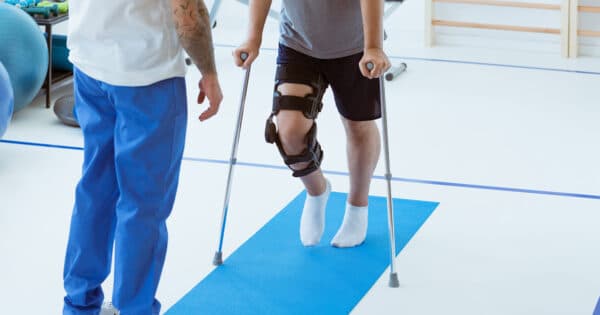We obtained compensation for a lady who developed a grade 4 pressure sore whilst attending a private hospital for a knee replacement.
In this case, our client was incorrectly assessed as being at “low risk” of developing pressure ulcers. The day after the knee replacement, our client reported a tingling sensation in her foot and continued to report pain and discomfort in the area. By the time she was discharged, she had developed a deep tissue injury, which developed into a grade 3 or 4 pressure sore.
This had a huge impact on her life. Her recovery from the knee replacement was prolonged. She had to attend multiple outpatient appointments to have her dressings changed and have treatment by a plastic surgeon. Her foot remains extremely tender and the surrounding skin remains tight and fragile. There has been nerve damage resulting in altered sensation which will be permanent or long-term. She has to use special cream to moisturise and wash daily. She used to enjoy walking when on holiday with her husband and is now unable to walk very far. Her general fitness has been adversely affected. She is unable to wear normal sized footwear or shoes with heels as they cause pressure and pain over the heel. She used to love to walk around her garden and in the house barefooted but is no longer able to do this due to the risk of injury to the vulnerable scar tissue and the pain associated with the lack of padding achieved from footwear.
Had reasonable preventative care/assistance and appropriate moving/handling equipment been provided, the deep pressure damage would have resolved within a day or so. The left heel ulcer and associated complications would have been avoided. We consulted a nursing and tissue viability specialist expert who identified that there were failures to use clinical judgment and failures to implement an adequate care plan devised for the prevention of pressure damage. There was no direction on the frequency of anatomical changes and no clear direction on how our client should be assisted to achieve repositioning. No slide sheets were provided and there was a lack of supervision to move up and around the bed safely to mitigate the risk of her developing pressure ulcer, particularly as it is recorded that she was unable to move independently. Once the ruptured blister occurred, there was a failure to assess the wound and devise a plan of care to promote wound healing and to reduce pain for our client by applying the principles of moist wound healing by the use of occlusive or semi-occlusive dressings.
Liability was denied by the hospital throughout. Finally, we obtained a low offer of settlement for our client. Through negotiation, we increased this offer to a level of compensation that reimburses our client for most of her incurred expenses, provides a sum to purchase equipment/treatment that she may need in the future and which reflects the pain, suffering and loss of amenity that she has endured as a consequence of the hospital’s negligence. It is also anticipated that lessons have been learned at the hospital to avoid such incidents occurring in the future.
Barlow Robbins were recommended to me by another solicitor, previously a partner in the practice that I merged with some time ago when I was in practice. From the time I had my first conversation, I felt I was in good hands. Natalie has pursued my claim and advised me to push on even when I felt somewhat disinclined. I am very grateful to her for all her advice and support throughout.
Client
Why choose us as your medical negligence solicitors?
Our team of specialist medical negligence lawyers has been hand-picked for their specific skills and technical competence in the area of medical negligence claims. Reaching a successful outcome demands not only expert medical negligence law knowledge but also an understanding of how the NHS and medical defence organisations arrive at settlement decisions.







